This versatile ground cover is often overlooked, yet I have found it to be a reliable workhorse. Ignored by deer and rabbits in my garden — so far — it fills in quickly between boulders and larger plants, bringing year-round color and texture, while also reducing the ability for weeds to establish in bare soil.
In spring the evergreen carpet becomes a haze of azure blue, as each foliage rosette explodes with a spike of flowers. As well as this plant being invaluable in the landscape, just one or two plants can add the finishing touch to container gardens, their draping habit softening the edges of the pot.
Although it spreads rapidly, it is easy to remove unwanted plants with a quick tug. They do not root deeply, so you can leave your spade in the garden shed. However, if you want a slow-growing ground cover with a very limited spread, bugle weed may not be the best choice for you.
Caution: Bugle weed may be invasive in your area. Check with your local cooperative extension or county extension office before planting.
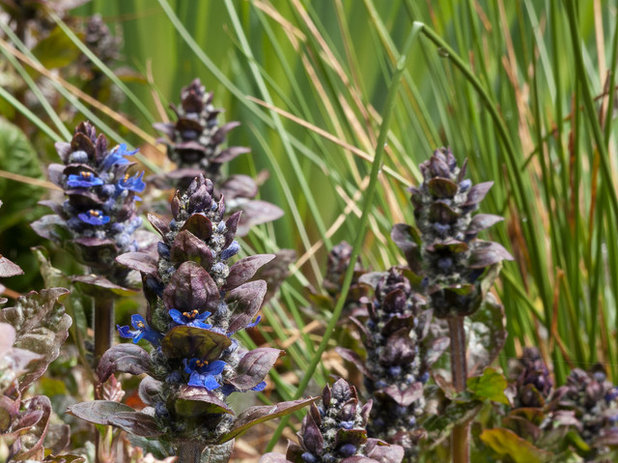
Le jardinet
Botanical name: Ajuga reptans ‘Catlin’s Giant’
Common names: Bugle weed
Origin: Europe
Where it will grow: Hardy to -30 degrees Fahrenheit (USDA zones 4 to 9; find your zone)
Water requirement: Adaptable to either drought or saturated soils
Light requirement: Partial shade is ideal, but will tolerate full sun in moist soil
Mature size: 6 inches tall; spreads indefinitely

Le jardinet
Benefits and tolerance: Attracts bees; deer and rabbit resistant; drought tolerant; copes with wet soils; can be used to reduce erosion on slopes
Seasonal interest: Year-round
When to plant: Spring or fall
Distinguishing traits: Glossy dark foliage; blue flowers in spring
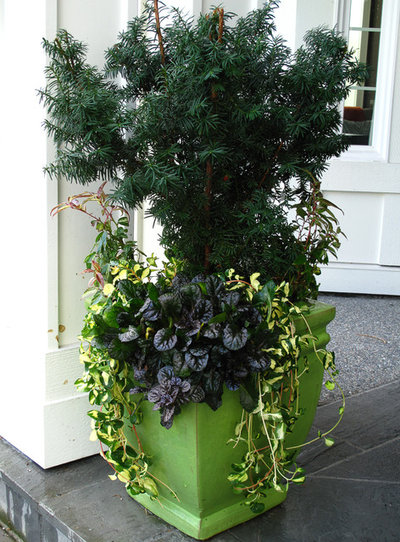
Le jardinet
How to Use ItIn containers. Bugle weed is a great addition to containers, where it will provide year-round color. Place it at the edge, where it can spill over the sides.
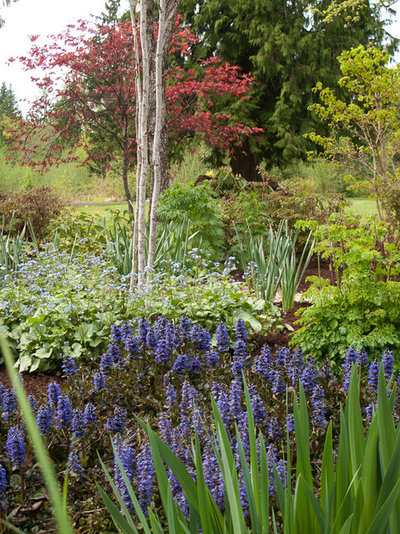
Le jardinet
As a weed suppressant. Newly planted gardens can pose a challenge for the gardener, as the exposed soil between immature trees and shrubs can quickly become a weedy mess. One solution is to plant annuals in these areas until the select plants fill in, but this helps only in summer. Planting an inexpensive ground cover is another option, and bugle weed is perfect for this purpose.
The large evergreen leaves of this tough little plant quickly carpet the ground, making it difficult for weed seeds to reach the soil and for light to penetrate. They can easily be thinned as needed.
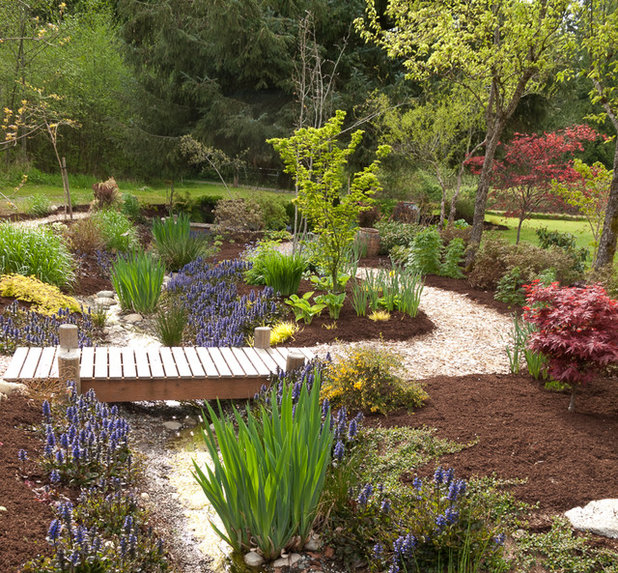
Le jardinet
For erosion control. Bugle weed spreads rapidly by sending out stems with new plantlets that root into the soil. The extensive root network has prevented the banks of this seasonal stream from being eroded during heavy winter rains.
A bonus is that in spring, when the stream is dry, the swath of brilliant blue flowers still gives the illusion of a meandering river.
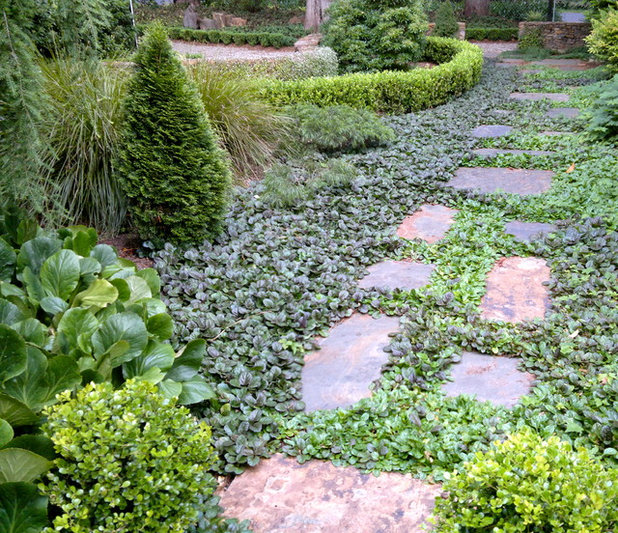
Arthur Lathouris Garden Designer
Between pavers. If you’re willing to regularly trim, bugle weed is a great textural plant to grow between pavers and flagstones; it will tolerate light foot traffic.
Planting notes:- Space 18 inches apart as a ground cover.
- It will grow fastest in partial shade and moist soil.
- Unwanted plants can easily be removed — they do not root deeply.
- Deadheading is not necessary except for appearance.





